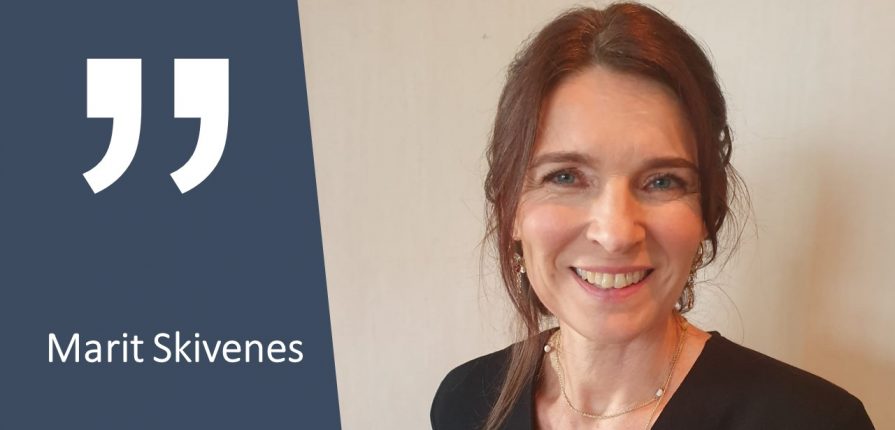BLOG: Child protection legislation must change its basic principle to accommodate a child focus on the rights of individuals.
The Nordic countries are often described as child centric, with a strong focus on children’s rights and good living conditions for children and their families. This was recently evidenced in the WHO-UNICEF-Lancet Commission (2020) report A future for the world’s children?. The report ranked a total of 180 countries in terms of survival and prosperity for children, and the five Nordic countries are all among the top 16 countries.
Although children’s rights have a strong standing in the Nordic countries, and the UN Convention of the Rights of the Child is universally ratified (with the exception of the US), there are some generic challenges implementing children’s rights in national legislation.
One area where this especially comes to the fore is child protection legislation. Governments have a responsibility to protect children against abuse, neglect and mistreatment if and when parents do not fulfill their parental responsibilities. Intrusive interventions must be in accordance with the law and follow procedures for due process, and typically, it would be the court that makes these decisions.
In modern states, the principle of least intrusive intervention prevails. This principle protects persons’ freedom and shields against a potentially overeager state. In child protection, this principle manifests itself by ensuring that services and interventions shall be as minimal as possible, and it is a principle that the European Court of Human Rights would typically emphasize in its reasoning.
In modern states, the principle of least intrusive intervention prevails.
However, if the child protection system shall not make greater intervention in the family than necessary, it oftentimes results in services that are not sufficient to improve the situation for the child. It may also result in children living in an unsatisfactory situation for a long time, because it has to be proven that services have been provided and are not improving the situation before a removal can be undertaken. This is not a practice that is in the best interests of a child at risk, but it is the principle that is enacted in law and that must be followed.
In Denmark, however, politicians have recently changed this principle in the child protection law so that the system can better protect the individual rights of the child. “… The authorities should choose as the first solution the intervention that is in the best interest of the child (CASS Sections 46 and 58). It follows from the preparatory works that if out-of-home placement is the best option for the child, it is not required by law that other measures must have been tried first.” (Hestbæk et al, 2020).
This change in legislation requires that services shall be adapted to the child’s needs ensuring that the child can continue living at home under improved conditions. Furthermore, it follows from this change that the criterion that the child can only be placed out of home if services are proven to be ineffective or useless, is no longer valid.
The Danish have also made another important change in the basic principles about reunification in child protection. The European Court of Human Rights has repeatedly underscored that all child protection removals shall be considered temporary, and that reunification is the overarching goal. This is a problematic position, as empirically it is a fact that many children in care cannot be, and are not, reunified with their natural parents.
Temporality as a principle is inhuman for children, in direct violation of the UNCRC, and does not accommodate children’s needs for attachment, belonging and permanency. Nevertheless, the idea that reunification is an important principle has probably resulted in governments’ negligence of the situation for those children who grow up in public care.
Temporality as a principle is inhuman for children, in direct violation of the UNCRC, and does not accommodate children’s needs for attachment, belonging and permanency
However, this principle is now changed in Denmark, as the new policy states that children who cannot reunite with their natural parents have a lasting affiliation with a new family. Instead of growing up in public care, with uncertainty for the child as to whether a foster home will last or what will happen when he or she turns 18, Danish authorities have instructed the child protection system to assess whether adoption is possible and in the best interests of the child.
Guidelines have been made so that frontline staff have instructions on when and for which children adoption must be considered. For example, children who have been placed for 3 years must be considered for adoption.
The core message we hear from Danish politicians is that children’s rights are important, and that child protection legislation must change its basic principle to be in line with a child focus on the rights of individuals. How the European Court of Human Rights relates to this clear challenge will be especially interesting to see.
Sources:
- Clark et al (2020). “A future for the world’s children? A WHO–UNICEF–Lancet Commission”. The Lancet.
- Hestbæk, A-D, Skivenes, M. Falch-Eriksen, A., Svendsen, I. and Bache-Hansen, E. (In press). “The Child Protection system in Denmark and Norway” in Berrick, Gilbert & Skivenes (eds.). Oxford Handbook International child protection systems. New York: Oxford University Press.


